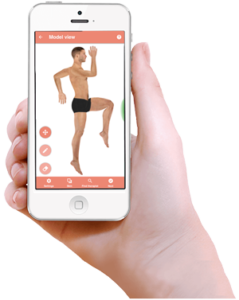Trigger Points & Thai Massage
There are approximately 650 skeletal muscles in the human body. They form about 40% of our body weight and 85% of human pain complaints! Almost all muscles can develop dysfunction resulting in pain, loss of flexibility and in some cases the most bizarre diseases. These dysfunctional cells within muscles are called Trigger Points (TrPs). The most common muscles affected are those in the neck, shoulder girdle, lower back and hip girdle.
School of Thai Massage has been on the leading edge of trigger point work making it accessible and usable for lay people. That is why we have spent thousands of dollars and hours on the development of our trigger point analytics app called Painalog.
A TrP shortens and weakens the muscle. A TrP usually lies within a taut band of muscle, which prevents the muscle from achieving full length. A therapist with well developed tactile skills can identify the taut band and by following the fibres of the muscle, track down to the TrP. A TrP prevents the muscle from achieving full length and is often the reason for pain in the joints where the tendon attachment bears the stress. Key in relieving this pain is the release of the TrPs to achieve full elongation. TrPs can refer pain far away from the site of the point itself (compare the picture of TrPs of the Infraspinatus with the referred pain pattern caused by them below).
TrPs can also cause resistance during contraction this is due to TrPs getting compressed during muscle contraction activating the pain receptors at the point.
The main reasons for Trigger Points are
- Rapid and extreme muscular pulls causing muscle to spasm protectively (like in whiplash)
- Prolonged contraction (posture, emotion, injury)
- Compression resulting in loss of blood/ nerve supply to the muscle group.
- General overuse
- They can also result from physiological imbalances in lifestyle, diet.
TrP’s are not visible with traditional medical testing such as MRI or X-ray. However, research has shown that around Trigger Points there is a concentration of lactic acid and several other molecules that are typical of an inflammatory response.
From an energetic viewpoint, meditators who could direct better focus and awareness to the point and “breathe into it” perhaps causing dilation of the capillaries at the point could “detoxify” such points.
Similarly, a Thai Massage Therapist’s aims is to bring the client’s awareness to the TrP causing changes in neurochemistry of the motor plate and consequently enhanced blood supply back into the muscle cell. Once some of the tenderness is relieved and some softness achieved at the point, you can proceed with some careful stretching to the muscle to enhance blood flow even more.
Techniques to handle Trigger Points are dealt with in our Thai Massage Course — Anatomy of Thai Massage and Thai Yoga Pain Management course


